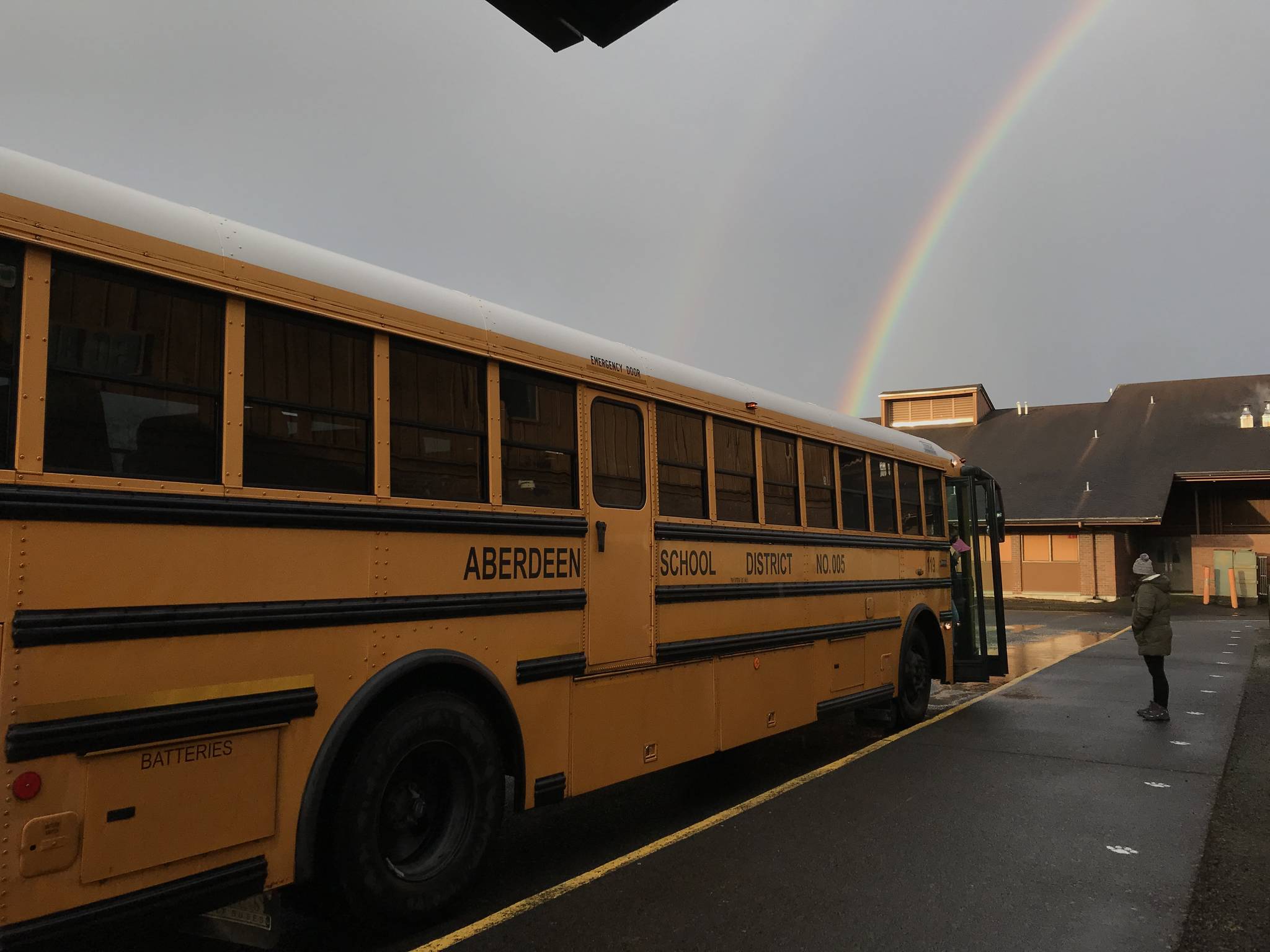With a smooth start at Miller Junior High School this week, only high school students are left waiting for in-person classes to start in the Aberdeen School District and that will happen the middle of this month.
“I’m very pleased to report that we’ve had two very successful days with our 7th and 8th graders at Miller,” Superintendent Alicia Henderson told the school board Tuesday evening. The middle school now has a full complement of 6th through 8th grade students, she said. Preschool through 5th grade students have already returned to in-person classes. “We await our high school which is just a few weeks, March 18,” she said.
Many seemed very happy to be back, she said. Some even cried and said they “would never complain about school again,” Henderson said.
Parents still have the option of remote learning if they prefer that.
It’s not the same routine that students left when they were last in the building last spring. The students spread a regular day’s schedule over two days, and all students still supplement their classes with online instruction.
On a given morning a Miller student now reports to their advisory class, then two ‘content classes’ like first and second period. The following day they’ll go from advisory class to the other two content classes. The high school will have three in-person classes per day, with its six-period schedule spread over two days. All of the students see shortened school days, and all have some form of afternoon distance learning classes to fill out their schedule. Henderson said that the hybrid schedule gives students a full complement of coursework, but is arranged to support distance and/or in-person classes.
Miller Junior High School Principal Lisa Griebel reported the school is working on cutting down long wait times during the afternoon parent-pickups. Henderson noted that classroom transitions are more difficult at Miller because the students change teachers and classrooms throughout their day. Miller Junior High has 764 students enrolled, of those, 514 have chosen in-person classes. About 75% of the elementary students have made the choice to return to class. At Miller, 66% of the 6th grade, 67% of 7th grade, and 69% of the 8th grade students are back in class.
Henderson said that so far, projections for the high school look lower, with closer to 50% of students saying they would return to in-person classes when they become available. She said they hope to see that number grow this month, but the students and their families can choose what’s best for them. Administrators did note that it’s much easier to start a student in a classroom and transition them to distance-learning because a physical space is made for the student when they begin in-person learning.
Administrators invited a state Department of Labor and Industries “walk-through” of the district buildings in early December to ensure that L&I standards were in place for employee safety. Henderson said they reported no findings related to COVID-19 precautions. Henderson said that ventilation concerns began last summer for things as simple as making sure windows open, and as complicated as determining how the air flows and circulates through the classrooms. Portable air purifiers have been placed in each classroom, and the district has placed an order for UV lights that kill viruses on surfaces. Other COVID-related building adjustments include plexiglass barriers for office staff, teachers and students in labs. Hand wash and bottle fill stations were purchased. An event tent was also purchased from the City of Westport to provide an outdoor covered area at Miller Junior High.
The district is also considering an in-person component for their meetings of the Board of Directors, however, new guidance from the state has 16 general requirements that a venue must satisfy before it can operate. For Phase 2 regions in general, public agencies such as school boards can now add an in-person component to their public meetings if they: Limit occupancy in each room to either 25 percent of capacity, or 200 people (excluding staff), whichever is fewer; Require that all attendees wear proper face coverings; Require that all attendees maintain six feet of physical distance from each other; and sanitize the meeting rooms.


